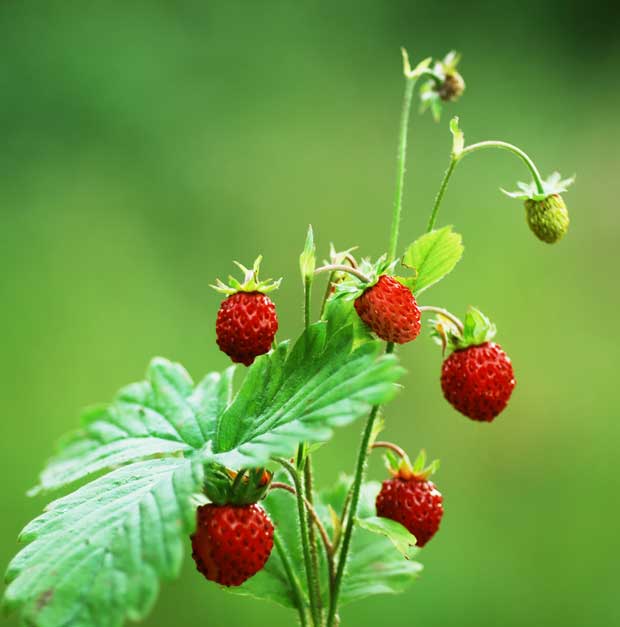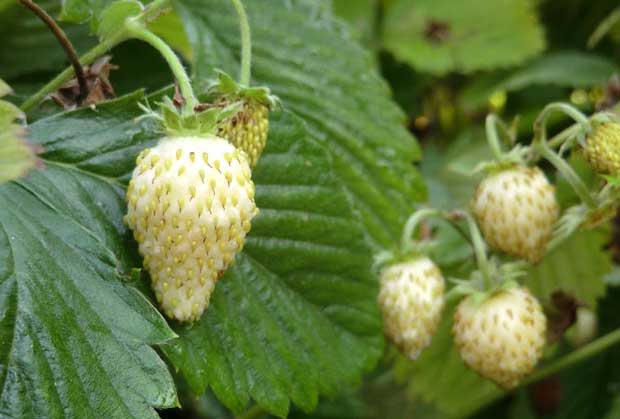A guide to growing wild strawberries in New Zealand

Alpine strawberries are quite easy to grow, and very hardy in marginal lands, like shady forests and snowy alpine hillsides
Words: Ben Gaia
Alpine strawberries produce smaller and less sweet fruit than their giant strawberry cousins of the holiday punnet. But as an addition to other berries or stonefruit in a midsummer dessert, their tartness sets off the other, sweeter flavours, and they are easier to grow than big strawberries.
My best performer has been the white alpine strawberry, which ripens to a white colour and out-foxes the birds, who warble nearby waiting for the fruit to turn red. Other good large strawberry varieties for my cold, wet zone, like Tioga, have been good performers in the past, but the fruit all got pinched at dawn by our attendant songbirds.
You really have to tend a strawberry patch. It’s a sign that all is well with the world if the strawberries are weeded in my home orchard. Strawberries are a classic example of getting out what you put in. They love a bit of pampering and the fruit should be gently sitting on dry wood chip or straw if it touches the ground at all. Some modern growers have long raised trays of strawberries under cover, but it’s a good idea to find hardy survivor types that will quietly fill a corner if accidentally abandoned.
Imported strawberry plants have been blamed not long ago for being a disease vector so try to encourage New Zealand nurseries by buying your plants within NZ. Good plants are often available at local plant swaps and markets or show days. If you go far enough out of town, you can still get them in wet newspaper at the dairy, or get them couriered to your door by clicking a button on a site like Trade Me.
Like many berries, wild types exceed themselves inside the shelter of the tunnel house, provided they are well watered, but they also thrive along banks or paths, as a casually grazed edible treat, something visitors love, plus they extend a ‘layer’ in a food forest at ground level.

White strawberries
5 THINGS TO KNOW ABOUT ALPINE STRAWBERRIES
1. Healthy and vigorous, as a ground cover or a path edging, alpine strawberries are a good edible option for most of the year but don’t produce huge numbers of fruit like modern hybrids.
2. They spread quite readily if given enough moisture.
3. They are very hardy to both cold and wet, but they dislike long dry spells.
4. Like big strawberries, warm sunny days are best to ripen their sharp, tasty fruits.
5. They may appear to die off in winter, but will readily re-emerge in spring and set off joyfully across the garden, doing their thing.
GOING WILD
My white alpine variety is probably White Soul, with a long fruit shape. Some varieties are grown more for their flowers, which can be a stunning dark pink.
White Alpine
This ‘wild’ strawberry has small berries on the end of long shoots, bright jewel-red with a gorgeous scent of strawberry
White Soul
Has a sweet, scented bubblegum-like flavour.
White Pineapple
Larger white berries than other white strawberry varieties, produces all year round. Noted as exceptional by Koanga Gardens with a hint of pineapple in their taste.
Alpine Red
Can be used as an effective groundcover. The fruit tastes like a traditional strawberry with a honeyed edge.
Alpine Yellow
Small, yellow fruit that turns white when ready to eat, will produce fruit all year round.
Love this story? Subscribe now!
 This article first appeared in NZ Lifestyle Block Magazine.
This article first appeared in NZ Lifestyle Block Magazine.

